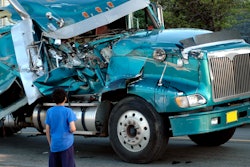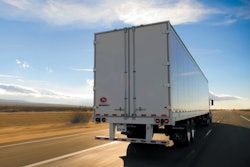As the Commercial Vehicle Safety Alliance’s Brake Safety Week approaches next month, experts offered insights and tips into one of the more common violations: brake hose chafing.
Brake violations regularly make up the majority of out-of-service violations, according to the CVSA, and during the upcoming Brake Safety Week on Aug. 21 – 27, inspectors in the U.S., Canada and Mexico will be checking entire brake systems to help ensure vehicle safety.
[Related: Want more brake maintenance tips? Download CCJ's updated Air Brake Book here.]
 CVSA recently published a flyer addressing brake hose chafing in preparation for Brake Safety Week, Aug. 21 - 27. CVSA
CVSA recently published a flyer addressing brake hose chafing in preparation for Brake Safety Week, Aug. 21 - 27. CVSA
“Chafing of an airline is typically from the line rubbing or touching something that leads to this kind of wear,” said Joe Kay, drivetrain engineering director at Meritor. “Air lines can also see damage from being bent and flexed constantly, which is a form of fatigue.”
Life on the road is tough. With trucks constantly hitting the highways, chassis, suspension, powertrain and other components (including brake hoses) are subject to movement, which can provide opportunities for chafing if hoses are not carefully routed and properly attached.










